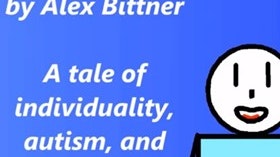Homepage
•
Learning Library
•
Blog
•
The story of autism as told by a 10-year-old with autism
Expand breadcrumbs
Expand breadcrumbs
- Learning Library
- Blog
- The story of autism as told by a 10-year-old with autism
- Homepage
- •
- Learning Library
- •
- Blog
- •
- The story of autism as told by a 10-year-old with autism
The story of autism as told by a 10-year-old with autism
By Nicole Krueger
December 18, 2018








